|
Go Beyond Now
Revolution in Paranormal Research
|
Can you hear me now? |
|
The following article is a condensed preview of the 30+ page booklet that was
included with my "Modern-Day Spiricom" package.
The Modern Day Spiricom is an
experimental system first introduced to the public on e-Bay in the Spring of
2008.
Several prototype units were sold and many interesting
recordings have been obtained using the system. Since 2008, I've made a few
more modifications and additions to the system, meanwhile the experimentation
continues.
If you have any questions about
the Modern-Day Spiricom, please
contact me.
Thanks!
|
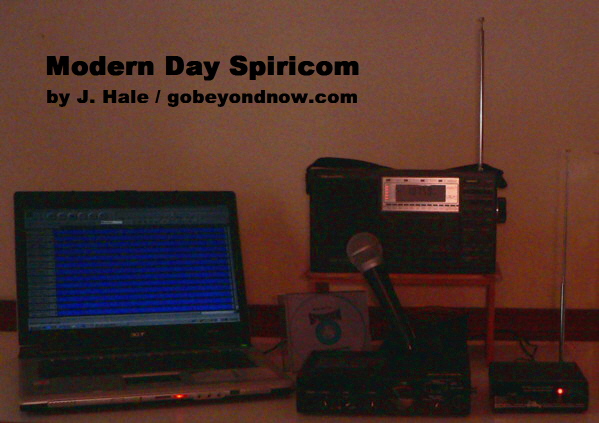 |
Original material that follows is Copyright 2008-2010 by J. Hale for gobeyondnow.com
All publication rights are reserved.
Make a Modern Day Spiricom
by Jim Hale
An updated version of George Meek's legendary
device is simple to make and easy to use.
|
Introduction:
In the early 1970's, a retired inventor and
entrepreneur named George W. Meek embarked on the quest to develop a
technology-based approach for communicating with spirits of the dead. Just a few years earlier,
the discovery of EVP had sparked
world-wide interest in trying to communicate with unseen spirits by electronic
means, but George Meek wanted something more
advanced and less subject to controversy than the rudimentary tape recorder methods
being used by EVP experimenters. Meek hoped to devise a system
that would consistently allow clear two-way communication between
earth-bound individuals and the spirit world.
Meek and several like-minded colleagues formed a
research group
called The Metascience Foundation. In the early stages of their
trans-dimensional engineering work the group was guided by communications received
in trance channeling sessions with psychic
mediums in Philadelphia. During those Philadelphia sťances, contact was reportedly made with several deceased but still very communicative scientists. One
such contact was with the spirit of Dr. W.F.G. Swann. Swann was once a popular science lecturer
and a leader in cosmic ray research who had lived (and died) in
Philadelphia. His discarnate spirit was said to have provided
Meek's group with the theoretical background and technical foundation upon
which to begin construction of a new type of spirit communication device. The
Spiricom, as it soon came to be called, was born.
|
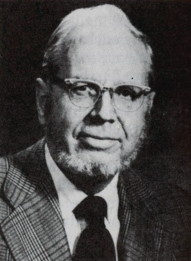
George W. Meek (circa 1985) |
| The name "Spiricom" was used to
refer to an evolving
series (Mark I - IV, etc.) of experimental devices that were built and tested over a
period of several years. Initial results from the Spiricom experiments were
both encouraging and
disappointing. Some interesting effects were observed but the desired
quality of communication remained elusive. Then, in 1977, one of Meek's associates, an electronics
technician named Bill O'Neil, reported that he had achieved voice contact
with a spirit entity called "Doc Nick" while using the Mark III version of
the Spiricom. Doc Nick was said to have been a former medical doctor and HAM radio
operator who was able to assist O'Neil, Meek, and the Metascience associates by
making technical suggestions for improving the Spiricom. Soon, contact with
another deceased scientist was reported as having come to Bill O'Neil through the
Mark IV version of the Spiricom. This new contact identified himself as Dr. George J. Mueller and, over the next
few years, Dr. Mueller's Spiricom-empowered voice suggested further
technical improvements to the system. In particular, Dr. Mueller was
credited with suggesting a combination of 13 specific audio frequency tones
which were to be used as the optimum background sound source by which a
spirit could make itself audible. |
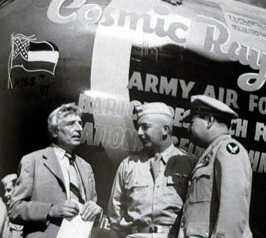
Dr. W.F.G. Swann, at left. |
| The major points of the Spiricom story were first
presented to a global public in John G. Fuller's 1985 book, The Ghost of 29
Megacycles. George Meek himself also wrote a series of books that
provided more details and insight concerning the Spiricom and its
development. One of Meek's publications, a booklet from 1982, offers the most "nuts and bolts"
information to help us understand what the Spiricom actually was and how it was expected
to perform its other-worldly magic. This booklet bears the extremely wordy title:
SPIRICOM - An Electromagnetic-Etheric Systems Approach to
Communications with Other Levels of Human Consciousness. It is
generally referred to simply as, The Spiricom Technical Manual. Contrary to what
many sources often state,
the Tech Manual does not give a full schematic diagram
for building any specific device. The manual does provide a "Functional
Block Diagram" however, and that diagram illustrates what the
main working components were and how the system was intended to operate. The Tech Manual also provides a detailed review of
equipment the Metascience group had tried in the past, and it included discussions on experimental designs
awaiting future development.
Many people throughout the world have expressed their interest in trying to
duplicate the results that Meek et al. claimed for the Spiricom. Since there is
such an inherent desire for us, as humans, to wish to reconnect in some way
with our departed loved ones and ancestors, one might think that it would be regarded as
a noble responsibility for scientists to put the
claims made by the Spiricom researchers to the test. However, mainstream science has shown little or no interest in trying to
replicate the amazing results reported by the Metascience pioneers. As for
the many would-be independent Spiricom researchers out there, most find
themselves feeling very intimidated at the prospect of building the
electronic apparatus necessary
for their own personal experimentation.
|
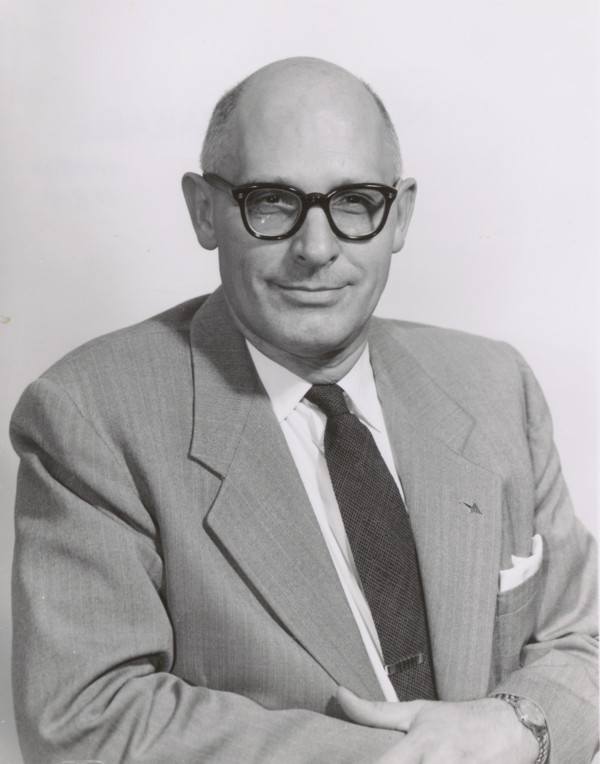
Dr. George J. Mueller |
|
You Can Build Your Own
Spiricom:
One reason for the lack of independent Spiricom experimentation is the
general belief that the system used by Bill O'Neil was a an extremely elaborate, prohibitively expensive,
and essentially unique device. Most people seem to
think that the Spiricom system would need to be reconstructed in exact accordance with
the original design in order to achieve successful results. However . . .
As mentioned in the introductory paragraphs above,
the word "Spiricom" was used as a generic term --
George Meek and company never intended that the word must refer
exclusively to one specific device.
Spiricom was and still is an evolving concept !
Although the details and components varied with each version of the early
Spiricoms, the operational model remained constant. Basically, that model
prescribed that a set of audio frequency tones would be mixed with the
signal from a radio frequency transmitter and that any cooperative
"spirits" would be able to modulate the transmitted frequencies in such a
way as to
produce recognizable voice effects. The resultant "spirit voices" could then be detected by
a conventional radio receiver,
listened to in real time, and simultaneously recorded.
This operational model is actually quite similar
to the standard processes employed by normal radio broadcasting, except that
with Spiricom, the voice or "intelligence" component of the signal is not
injected prior to the transmission of the signal, instead, it is expected to be added by
the
"electromagnetic-etheric"
or "spirit" energy at some point between the transmission and reception stages.
Let's take a look at what Meek
termed the "Functional Block Diagram" to illustrate this
theoretical process:
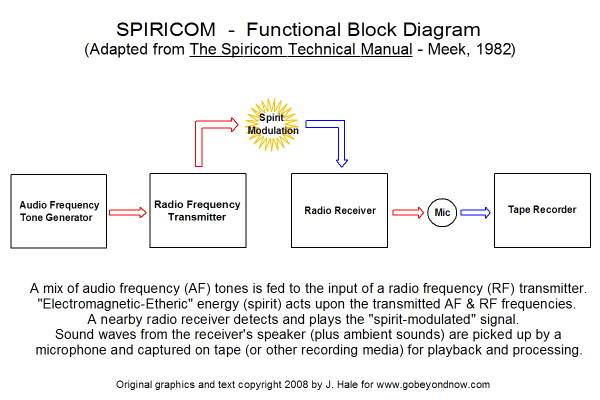
(This graphic was adapted directly from Meek's hand-drawn sketch on page 32
of The Spiricom Technical Manual, 1982.)
As you can see, the Spiricom
consisted of exactly five functional components:
1) Audio Frequency Tone Generator
2) Radio Frequency
Transmitter 3) Receiver 4) Microphone 5) Recorder
|
|
Chances are good that most people
reading this article already have items number 3-5 close at hand. The radio
receiver is a common household item, while the microphone and
tape recorder (or other suitable recording device) are standard equipment for anyone
already active in EVP and ITC
research. Even if you don't have all of these items, they are widely
available and can be obtained at relatively little expense. Naturally, the
components you choose should be of "good or better" quality, but
feel free
to start with what you already have or can easily obtain, and then experiment with different components and
techniques over time.
As for item number 1, the Audio Frequency
Tone generator, this was actually the part of the system that presented Meek and his
associates with their most challenging engineering obstacle. Crucial for
supplying the 13 specific background tones as suggested by the spirit of Dr.
Mueller, Metascience's so-called "Multi-Tone Generator" had to be
painstakingly designed and custom built. Remember, it was the late 1970's - early
1980's,
and most of the engineering people involved were experienced primarily with
vacuum tube
technology.
Well, guess what: It's another century
now, and you already have an excellent Multi-Tone Generator sitting right in
front of you. Yep, your computer, when
equipped with the appropriate audio
software, is very capable of supplying the correct mix of audio
frequency tones to enable you to make your own Spiricom. In fact, your computer
can do the job with more precision, better control and far greater
versatility than the 1970's/80's era Spiricom builders could have dreamed.
|
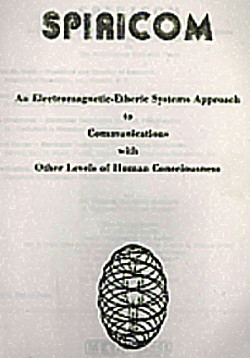
Cover of The Spiricom Technical Manual |
|
Alright then, you're off to a good start and need only one
more component to complete your own working Spiricom: The radio
frequency transmitter. Here again, by having begun your quest to build a
Spiricom in the 21st century, you have a great advantage over George Meek
and his team.
In the 1970's, if you were in the market
for a radio frequency transmitter, you were looking for something that weighed about 100 pounds, cost upwards of
several hundred dollars (that's several hundred 1970's dollars!) and
contained a Christmas tree's worth of miniature light bulb thingys called vacuum tubes. Today, thanks to the amazing advances in
electronics technology, a simple radio frequency transmitter can be obtained for well under
a hundred dollars, and such devices weigh in at just a few ounces. Hence,
they are extremely portable and well-suited to on-site investigations.
(That's another big advantage the Modern-Day Spiricom holds over the
unwieldy original version!)
True, a good radio frequency transmitter
isn't something you can pick up at your local Wal-Mart, or even at Radio
Shack, but now, thanks to the internet, you're just a few mouse clicks away from
having one sent right to your mailbox. Please read on . . .
|

Bill O'Neil at his Mark IV Spiricom:
HP-608 RF Transmitter is at left, the
Multi-Tone Generator (center top), Tape Deck, and Hammarlund 600 Receiver
are stacked in front of O'Neil.
|
My Proposal for Continuing
the Research With a Modern Day Spiricom:
After several years of research into the background and
theory behind the original Spiricom, several factors recently came together that
helped
me realize assembling a modern-day version of the device was not just a
hypothetical possibility, but a very practical and readily achievable goal. The
first breakthrough came when it dawned on me that computers could
be used as a substitute for George Meek's Multi-Tone Generator. All one needs
for generating the required audio tones
is a sound card equipped computer, the appropriate software, and
just an average level of computer know-how.
As for the radio frequency transmitter, since I happen to
be a long-time radio and electronics enthusiast with experience in the field of
what's called "Hobby Broadcasting", I knew that good quality RF transmitters are
available and very reasonably priced as build-it-yourself kits. I was already aware of
some good choices for the transmitter, and in fact had already built several
such units for my own use and for sale to others.
Incidentally, when not being used as part of a Spiricom assembly, these
transmitters are great for broadcasting music and other
audio throughout your house and property. For example, I often use one to play
streaming music from the internet over radio
receivers located in other parts of my house and even out to my shop; the sound
quality is excellent. One could even be used to
serve as a high-quality baby monitor or perimeter monitor, that sort of thing.
They are not limited to just Spiricom research!
Finally, I realized that a good way to present my modern
day Spiricom idea, and to enlist the support of others interested in pursuing
similar experimentation, would be to advertise the concept on e-Bay. Soon,
I went to work on putting together a package that would enable anyone with a
minimal level of technical and computer skill to assemble their own working
Spiricom.
* *
* * *
It's possible that you've stumbled onto this site from my
e-Bay auction page, so let me say at this point that I definitely appreciate
your taking the time to read through all of this explanatory material. I realize
it's not the sort of thing you usually expect to encounter on e-Bay, but I 'd
like for you to fully understand where I'm coming from with this rather unusual
auction offering.
Specifically, what you can expect to
receive with your e-Bay Spiricom purchase are three "tangible" items plus one that is
"intangible".
THE TANGIBLE ITEMS
INCLUDE:
1) A Radio Frequency Transmitter: At this
time I am offering the model identical to the one I'm using in my own
experiments. Its a transmitter that I can confidently recommend to you as
being the outstanding performer in its price class. It is the Ramsey
Electronics model FM10 FM Stereo Transmitter. You will receive an
assembled, wired and tested unit by the way, not a kit, complete with audio
connector cable, a detachable whip antenna and even the required 9 volt battery.
You should be aware that radio
frequency transmitters like the FM10 are permitted for personal use in accordance
with
FCC regulations for low power transmitters. However, "low power" doesn't mean
"no power", and the FM10 is not a toy!
It must be used in a manner that does not interfere with the reception of any
licensed broadcasting service.
Your FM10 will be prepped to operate at the
low end of the FM broadcast band. In fact, the FM10 can be tuned to transmit at
a frequency that's actually a little below the standard FM band but still
receivable on most FM radios. Using this "special" frequency can help to
alleviate the possibility of ordinary radio broadcasts being picked up by your
Spiricom device. I'll have more to say about these more technical aspects of
using the transmitter in the info package that is included as part of your
e-Bay purchase.
2) A CD-ROM: The CD-ROM contains an audio
software program plus associated data files which will enable you to use your
sound-card equipped PC as the audio tone generator for your own working
Spiricom. The data files contain the 13 specific audio tones (as mentioned
in the introduction above) pre-recorded for quick installation and playback on
your computer. Once you become more familiar with how to use the audio program, you will be
able to make adjustments and changes to the tone patterns if desired. Again,
instructions for doing this will be provided. The CD will also include a few
other software programs that I have found useful for paranormal research,
consider them a bonus for more advanced investigations.
Obviously, some degree of knowledge about computers,
how to copy files from a disc onto your hard drive, how to hook a cable to
your computer's earphone jack, etc. will be required. Generally speaking though, anyone
with an average level of computer and audio component knowledge should be able to get
everything hooked up and running with no problems.
3) An Information Package / Instruction Booklet:
This booklet will contain more detailed instructions on using the Radio
Frequency Transmitter and your computer as parts of a modern-day Spiricom
assembly. It will also contain information and suggestions regarding the
components that you are expected to provide yourself, i.e., the radio receiver,
microphone and recorder. As mentioned previously, these are standard, readily
available items and you should feel free to experiment with what you already own
or can easily obtain. In addition, the booklet will contain supplemental
information concerning the original Spiricom, including some "lesser known" and
"previously unknown" information which my own independent research has
uncovered.
THE "INTANGIBLE" ITEM
INCLUDED WITH THIS PACKAGE IS:
My continuing assistance to help you in
your own quest to experiment with the modern-day Spiricom.
I intend to share the results of my
experimentation with others who decide to join me in this field of research, and
I hope that you will share your results with me as well. If enough interest in
this project is demonstrated, I will open a website to post news, developments
and suggestions for further research. Meanwhile, anytime you have questions or
comments regarding your Spiricom experiments, feel free to pass them along
and I will be happy to respond asap.
Thanks again
for reading all this and I look forward to hearing from you soon!
Good Luck with your experiments!
J. Hale
|
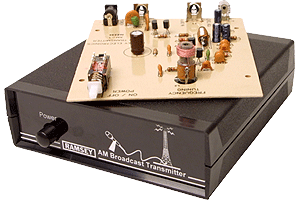 |
Update 2009:
The Modern Day Spiricom is designed
around a small kit-built radio frequency transmitter. The prototype system
used an FM transmitter. Soon, an AM transmitter system will also be
offered for experimenters wishing to test the possibilities available in
that band.
An additional device called the Crystal
Receiver, similar to the old-fashioned crystal set radios, was later added
as part of the system with excellent results. The Crystal Receiver in turn
inspired a spin-off device, the Harmonic Coupler. This serves as a Radionics type instrument which may help
to attract and focus the energy of a specific spirit.
J. Hale
|
More info coming
soon!







